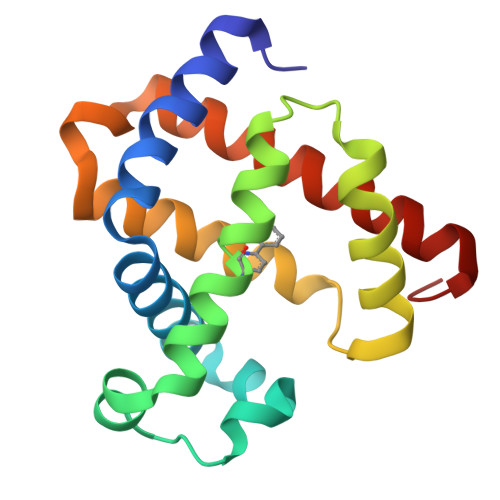Photocatalytic C-O Coupling Enzymes That Operate via Intramolecular Electron Transfer.
Lee, J., Song, W.J.(2023) J Am Chem Soc 145: 5211-5221
- PubMed: 36825656
- DOI: https://doi.org/10.1021/jacs.2c12226
- Primary Citation of Related Structures:
7YLK - PubMed Abstract:
Efficient and environmentally friendly conversion of light energy for direct utilization in chemical production has been a long-standing goal in enzyme design. Herein, we synthesized artificial photocatalytic enzymes by introducing an Ir photocatalyst and a Ni(bpy) complex to an optimal protein scaffold in close proximity. Consequently, the enzyme generated C-O coupling products with up to 96% yields by harvesting visible light and performing intramolecular electron transfer between the two catalysts. We systematically modulated the catalytic activities of the artificial photocatalytic cross-coupling enzymes by tuning the electrochemical properties of the catalytic components, their positions, and distances within a protein. As a result, we discovered the best-performing mutant that showed broad substrate scopes under optimized conditions. This work explicitly demonstrated that we could integrate and control both the inorganic and biochemical components of photocatalytic biocatalysis to achieve high yield and selectivity in valuable chemical transformations.
Organizational Affiliation:
Department of Chemistry, College of Natural Sciences, Seoul National University, Seoul 08826, Republic of Korea.


















